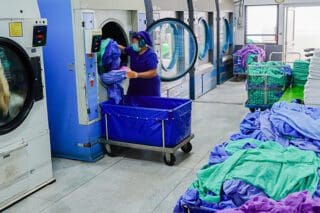
Many politicians face various highs and lows in their careers. If they’re lucky to be voted into office, it may be very short lived and possibly filled with strong opposition. But Representative Bruce Vento served in the U.S. House of Representatives on behalf of Minnesota from 1977 until his untimely passing in 2000. Prior to serving in the U.S. House of Representatives, Vento began his long political career as a member of the Minnesota House of Representatives in 1970.
Through his career in the House, Vento served as a leader in environmental, human services, and banking legislation. He was a member of the Committee on Banking and Financial Services and the Committee on Resources, and also became chairman of the Subcommittee on National Parks, Forests, and Public Lands from 1985 to 1994. During that ten years alone, Rep. Vento saw the enactment of 300 laws.
But while Vento was serving the country and helping enact important change, he was unknowingly in the midst of facing a deadly, aggressive cancer that would abruptly end his service.
Asbestos Exposure on the Job
Long before he was in office, Vento was a hardworking student in Minnesota. He was the second oldest of eight children, and worked many different jobs to help fund his college education. Vento worked as a paper carrier, a machinist in a local plastics company, a part-time mail room clerk, as well as in a restaurant and construction for some time. While he was working these various jobs, sometimes simultaneously, it is likely he came into contact with some asbestos-containing goods.
Throughout the world, asbestos has a long, vast past, as it was heavily used in so many applications. Construction materials, automotive parts, fireproof clothing, some consumer goods, and more all potentially contained asbestos materials because of its affordability and “miraculous” properties.
Unfortunately, Vento worked in two fields that are considered high-risk for asbestos exposure. Machinists can be found in a variety of industries, but regardless of the specific field, they all potentially risked exposure on the job. Machinists generally work with the machines or equipment being used in these industries. As the machinery went through its processes, most would typically generate high heat and friction, making asbestos a go-to material in their creation. As such, machinists would handle asbestos-containing materials frequently in their jobs as they maintained or fixed the equipment. Asbestos gaskets were especially common, as machinists often created their perfect-sized gasket for a particular machine themselves by cutting an asbestos sheet.
Vento believed his exposure primarily came from his days working construction in college. Insulation, roofing, concrete, caulking, tiles, and more all had a high chance of containing the mineral, putting these workers like Vento in danger.
Facing Mesothelioma
Because of the long latency period associated with mesothelioma, Vento didn’t experience symptoms from his exposure until he was on a business trip in early 2000. He began experiencing shortness of breath and back pain, so he went to his doctor upon his return to Washington D.C.
After various tests, Vento and his wife, Susan, learned he had pleural mesothelioma in late January. Since mesothelioma is often not diagnosed for decades after exposure, it is typically found after it has advanced to a later stage because of the cancer’s aggressive nature. Most patients are given a rather dire prognosis of just 12 – 21 months. Following his diagnosis, the Ventos traveled to the Mayo Clinic, a treatment center that specializes in mesothelioma, to undergo rather aggressive treatment.
Vento first had surgery, which entailed the removal of his lung, part of his diaphragm, and his lymph nodes. After he recovered from surgery, his treatment continued with chemotherapy, followed by five rounds of radiation. While he was undergoing this grueling treatment plan, Vento continued to work from Minnesota and fighting for the causes he most believed in.
Unfortunately, despite the intensive treatment, Vento passed nine months after his diagnosis, just a few days after his 60th birthday.
Advocating in His Honor
Susan Vento met her husband on his campaign, as they bonded over their shared vision for the world and hopes for the future. She saw his strength and determination in fighting for that vision, even when facing a deadly diagnosis. After her husband’s death, Susan decided to become an advocate for asbestos victims and their families.
Before his diagnosis, neither had ever really heard of mesothelioma or truly understood the dangers of asbestos. Now, Susan has spoken out and been involved in efforts in Minnesota, as well as congressional movements to not only help educate about the disease, but to help protect asbestos victims’ rights on the state and federal levels. In an effort with the Mesothelioma Applied Research Foundation, she also helped author a mesothelioma book, 100 Questions & Answers about Mesothelioma.
One more recent campaign occurred last year when she spoke out in Congress against the Furthering Asbestos Claims Transparency (FACT) Act. In an emotional speech, Susan explained how the bill would give power back to these companies that knowingly used asbestos and obstruct justice for those facing asbestos-related diseases.
Though it’s likely a long battle ahead in fighting such anti-asbestos legislation and finally seeing a ban on asbestos, Susan and many other advocates will keep fighting until they succeed in honor of Bruce and countless other asbestos victims.




